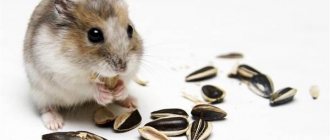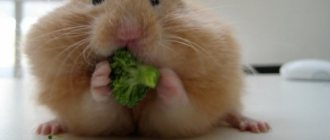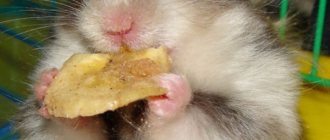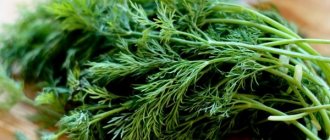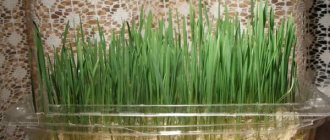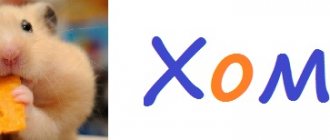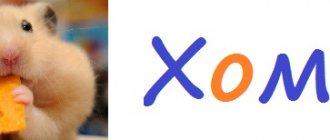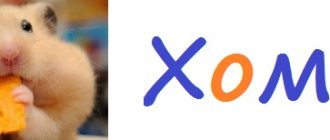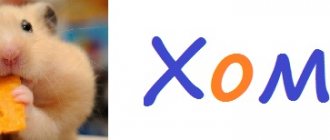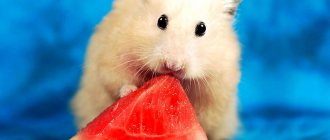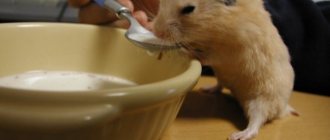- home
- Nutrition
17.07.2018
With the arrival of the warm season, various products that are typical only for the summer period appear on our tables. Almost all of them are replete with a complex of vitamins, important substances, and plant sugars. These foods are full of pulp and juice that quench your hamster's thirst and are great as treats.
The well-being of rodents and their appearance directly depend on the food that we give them to eat. In some cases, when the owner wants to pamper his pet, delicacies are contraindicated for hamsters. Let's find out if hamsters can eat pumpkin.
Benefits of pumpkin for rodents
In their natural habitat, hamsters love to eat not only grains, seeds and nuts. They enjoy searching for new food and nibbling on fresh plants, as well as fruits and vegetables. Among the latter is a rich list of fruits that can be fed to hamsters as their main food.
In the summer, seasonal vegetables appear in the diet of small pets. They contain important and necessary minerals, vitamins, and plant sugars.
These vegetables include raw pumpkin. Its juicy pulp copes well with thirst and is well suited as a treat for hamsters. It contains a complex of vitamins: B, C, E, PP. Rich in phosphorus, iron, potassium and protein.
Pumpkin fruit has a powerful antioxidant - beta-carotene. Experts recommend that everyone include it in the diet of hamsters for the following problems:
- Overweight;
- Diabetes;
- Problems with the gastrointestinal tract.
Pumpkin is a dietary product; its puree is also included in complementary foods even for small hamsters.
Pumpkin seeds
Pumpkin seeds contain a large amount of fat, protein and dietary fiber, and also contain vitamins A, group B, E, K, phosphorus, magnesium and potassium. Due to their high fat content, pumpkin seeds have a high calorie content. It also contains the substance cucurbitin, which has an anthelmintic effect.
Can hamsters have pumpkin seeds? Pumpkin seeds are very useful for the delicate organism of a rodent. They are included in many ready-made foods. If you mix grains yourself to feed your pet, then do not forget to add pumpkin seeds. The hamster will be very happy with such a treat. Including pumpkin seeds in your pet's diet will help protect it from helminths and also improve the appearance of its coat.
But when feeding this product, be careful because pumpkin seeds are rich in fat. For large breeds of hamsters, 2-3 pieces per day will be enough, and for dwarf hamsters, one piece will be enough. It is also worth noting that the seeds must be raw, without salt or other additives.
In their natural habitat, hamsters feed not only on dry seeds, but also love to eat vegetables and other juicy foods. Therefore, most vegetables can be fed to small furries in small quantities, while monitoring the general condition of the pet. We figured out whether a hamster can have a pumpkin, but read this article about what fruits to offer a rodent.
Source
Can pumpkin be harmful?
Contains a large amount of fiber. It is not recommended for daily use by hamsters.
If you feed your hamster pumpkin more and more frequently, changes in the color of the rodent's coat may occur. So, for example, the fur of a white hamster will turn yellow, a cream hamster will turn orange, and a black hamster will turn brown.
In what form can it be given?
Can hamsters eat raw pumpkin? A tiny rodent will be able to digest the pulp of this vegetable. You can offer a small piece of raw pumpkin pulp or some juice, but not every day.
You can also boil the pumpkin, steam it or cook it in the oven and offer it to your pet in this form or as a puree. Just when preparing food for small rodents, do not add salt, sugar, oil or spices.
To the question whether a Djungarian hamster can have pumpkin, the answer is also in the affirmative. Only portions for such a pet should be much smaller than for Syrian hamsters.
We also want to draw your attention. If pumpkin is consumed in excess, the pet's color may change, namely, yellowness will appear or the saturation of the yellow color in the color will increase. For example, a white hamster can turn yellow, a black one can turn brown, and a cream hamster can turn almost orange.
How to give pumpkin correctly
The food we feed our favorite animals directly affects their well-being and appearance. Most often, when the owner wants to pamper his pet and treat him to “something tasty,” such delicacies are strictly contraindicated for hamsters.
It is allowed to carefully give your pet a taste of this or that vegetable in small portions and observe the reaction. However, hamsters are quite capable of digesting the pulp of fresh pumpkin.
For variety, furry rodents can periodically include raw or processed pumpkin in their diet. One option is to give hamsters stewed, steamed or boiled pumpkin.
The first step is to wash the product well. Then serve it like this or heat treat it. When you bring a purchased pumpkin from the store, you should definitely wash it well, and it is best to remove the peel in a very thick layer.
It is necessary to cut the peeled flesh into small pieces to make it easier and more convenient for the hamster to eat them. Also, it is important to promptly remove uneaten leftovers from the cage, otherwise they will begin to rot, and the animals should eat only fresh food.
Canned vegetables are never suitable for feeding your furry friend!
The best quality vegetable is always the one that was grown in its own garden, without treatment with pesticides.
Can hamsters have melon?
Melon is a healthy product for humans, but the body of rodents is structured differently. The large percentage of sugar contained in this dessert vegetable is harmful to small pets, especially toy breeds that are prone to developing diabetes.
In addition, melons that appear on store shelves early are always grown with the help of chemical fertilizers, which are absorbed into the peel and penetrate into the pulp. This concentration does not harm a person, but for a hamster the dose can be fatal or cause severe digestive system upset, expressed in vomiting, constipation or diarrhea.
However, if you really want to please your pet, then you can give your hamster dried melon. The piece should be very tiny and it is better to mix it with other treats. A treat like raw melon seeds should be included in the menu occasionally.
What else should you give Djungarian hamsters?
To maintain a good mood and well-being, other products are important. These include:
- Mineral stone.
- Hard treats (dog biscuits) are given once every seven days to wear down the incisors. If teeth become excessively long, they can damage the roof of your mouth.
- Protein foods (low-fat cottage cheese, yogurt, kefir, boiled rabbit meat, turkey, chicken, eggs, low-fat boiled fish, earthworms purchased at a pet store, butterflies, daphnia, gammarus, grasshoppers, peeled shrimp. The Turkmen cockroach is ideal). Wild-caught insects are often contaminated with microorganisms that cause diseases in rodents.
- Clean, daily changed water, even if the animal drinks little. The stagnant liquid is poured out. Filtered spring water is suitable. The drinking bowl should be protected from direct sunlight, which can cause algae to grow inside the container.
The feeder is washed regularly. Grain and dry food are poured every day. Accustoming to a new component is carried out gradually, starting with a small crumb. Uneaten leftovers are thrown away. The little glutton is inclined to stockpile; eating spoiled food is fraught with poisoning.
In case of indigestion, Djungarians are given rice water, which has an enveloping, fastening effect. Babies who find themselves without mother's milk are supplemented with dairy-free formulas, regular cereals soaked in water, vegetable and meat baby purees without adding salt or sugar.
Watermelon seeds: a subject of controversy
Since pulp and rinds are contraindicated for small pets, owners doubt whether hamsters can have watermelon seeds. It’s in vain, because the pulp is dangerous due to excess water and sugar, and the crusts accumulate toxic nitrates. You can give seeds if you first wash and dry them. Melon seeds are also prepared so that they are not sweet.
Possible harm to seeds:
High calorie content
If you pour commercial food into the feeder, you will notice that the hamster eats the seeds first, and with great appetite. If such a nutritious food is given without restriction, it will lead to obesity. A fat hamster does not live long and may suffer from diabetes and other diseases.
Excess fat
Sunflower seeds are half fat, and the rest of the seeds contain a lot of oil. If consumed excessively, the rodent's liver cannot withstand the load, which shortens the pet's life.
Husk
In industrial food, all the seeds are unshelled, so it never occurs to the owner to shell the seeds before giving them to the hamster. The process of chewing the shell is additional entertainment for a rodent that is bored in its cage. The hamster wears down its teeth on large seeds. It would seem that the husk has only one benefit.
However, much depends on the type of animal. For dwarf individuals, the husk threatens trouble: the seeds of melon and pumpkin are so large that they can get stuck when trying to stuff them into the cheek pouches. Sunflower peels can cut the cheek pouches with their sharp edge, leading to inflammation and abscesses.
Therefore, it is better to give Djungarian hamsters peeled seeds, or strictly individually, so that the animal eats the treat immediately and does not try to store it for future use. The hamster's attempts to stuff another seed into his stuffed mouth look funny, but such entertainment is dangerous for the pet. Dwarf hamsters should not be allowed to get to a whole handful of the delicacy. You can stuff your cheek pouches to a dangerous limit with almost any seeds, even watermelon ones.
Rules for organizing “hamster” nutrition
When thinking about the question of whether hamsters can eat melon, many people forget about the general rules for feeding rodents. But a well-balanced diet is the key to the health of your furry pet.
On a note! A balanced hamster diet should contain 65% carbohydrates, 16% proteins, 4.5% fats.
A special feature of hamsters is their small size. Because of it, animals have a very high metabolism. It is strictly contraindicated for them to starve.
Like other pets, rodents require vitamins and microelements. An alternative to melon can be apples, pears, and vegetables.
What not to feed
Some foods consumed by humans are poisonous to animals. You cannot treat everyone without fear for the health of the rodent. The animal is small in size, a small crumb will cause suffocation, intoxication, and death.
What is prohibited for a Djungarian hamster to eat:
- Cabbage, beans, bread - cause fermentation, trigger rotting processes in the intestines.
- Potatoes contain a large amount of starch.
- Spices are irritating to the digestive tract.
- Mint.
- Mushrooms are a heavy food.
- Onions, garlic, sorrel.
- Honey, chocolate (rich in theobromine, which affects the cardiovascular system).
- Sour berries: sea buckthorn, barberry.
- Raspberry - weakens.
- Almonds - contain toxic cyanic and hydrocyanic acid.
- Melons and watermelons are often treated with nitrates.
- Fatty food.
- Bakery products, pasta. Black bread has high acidity and causes gas formation.
- Milk, sour cream, cream, butter.
- Sausages include prohibited soy, starch, and spices.
- Muesli and breakfast cereals are rich in sugar and harmful flavoring additives.
- Exotic fruits - persimmon - are rich in astringents and tannins that cause constipation. Avocado (massive amount of fat), pineapple, pomegranate, mango, kiwi, orange, lemon (acids).
- Apricot pits, peaches, cherries.
- Unpeeled seeds and pasta damage the cheek pouches of animals.
- Brightly colored berries and fruits cause allergic reactions. Watery eyes, redness of the skin, itching are reasons to refuse the product.
- Fatty cheeses contain an excess of salt, milk sugar - lactose, which is difficult for the stomach to digest.
- Spices are rich in essential oils that cause allergies.
It is extremely undesirable to treat an animal with food from the table, sweet, spicy, salty, flour, fried, flavored with spices. Food from the refrigerator is prohibited; it must be at room temperature.
